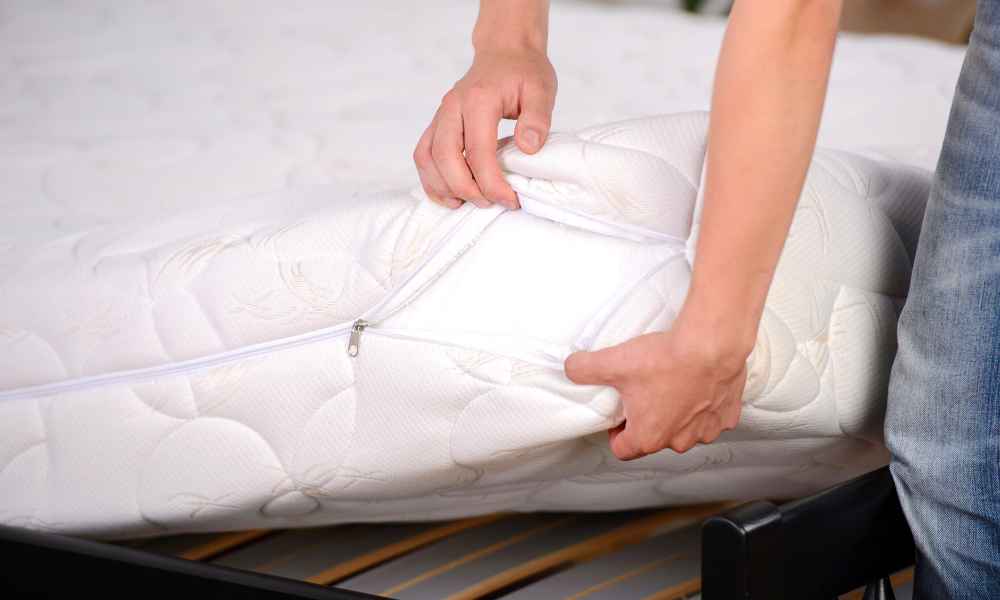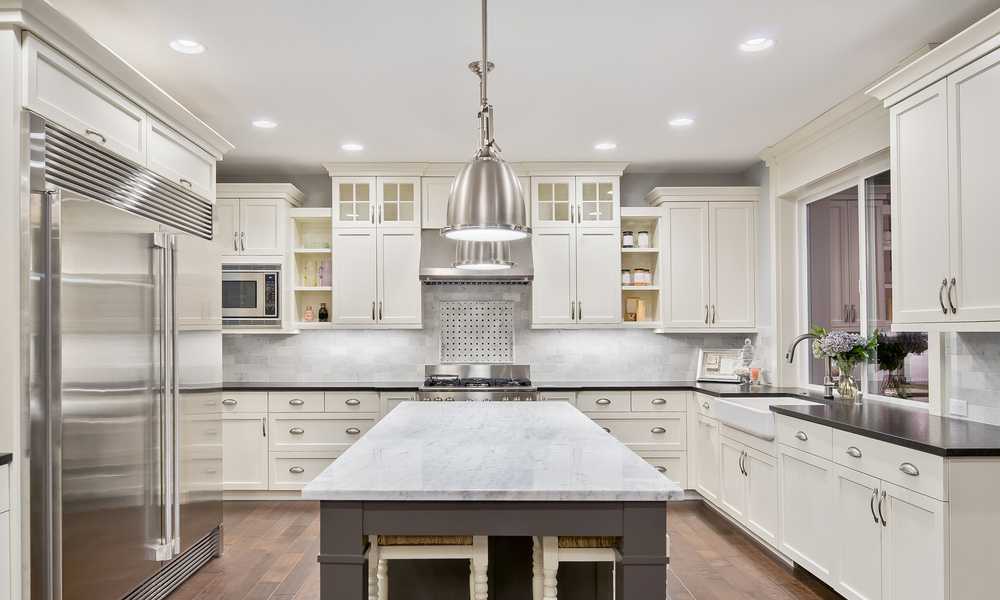Kitchen curtains with a valance may quickly improve the mood of your cooking area by fusing practicality and beauty. These window coverings provide the center Of your house with a sense of elegance in addition to offering seclusion and control over natural light. Learning how to hang kitchen curtains with A valance is A simple and satisfying procedure that will improve the appearance and feel of your kitchen and make it a pleasant and inviting place for family and friends to meet, Regardless of whether you are an experienced decorator or a DIY enthusiast.
What is the first step in hanging kitchen curtains with a valance?
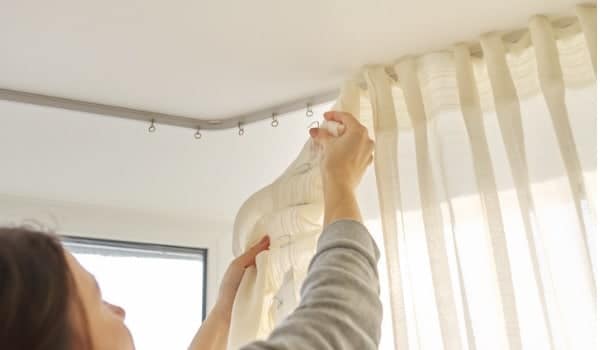
The first step in hanging kitchen curtains with a valance is to measure the kitchen window accurately. Measure the width and height of the window to determine the curtain and valance sizes needed. Precise measurements ensure that the drapes and Border fit perfectly on the window, creating an aesthetically pleasing and functional window treatment. Additionally, it will help you choose the appropriate curtain rods or hanging methods to accommodate the dimensions of the window and the desired Drape style.
What are the different curtain-hanging methods available?
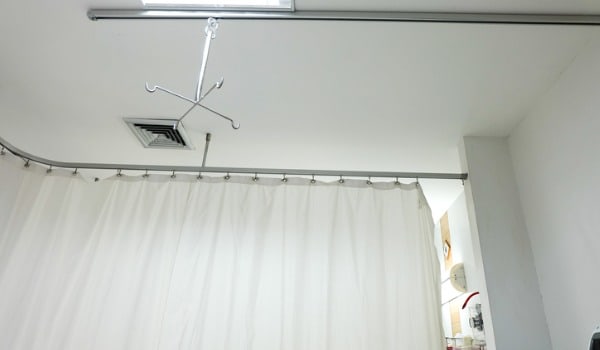
There are several curtain-hanging methods available to hang kitchen curtains with a valance. The common options include using curtain rods and rings, which can be standard or decorative, and tension rods that don’t require drilling. Drapehooks, like S-shaped hooks or pinch-pleat hooks, are another method to attach drapes to the rod. Alternatively, one can use Drape tape like sew-on tape or hook-and-loop tape. Curtain clips, such as clip rings or clamp-on clips, provide a modern and easy-to-install approach. Each method offers unique Advantages, allowing you to choose the one that best suits your window size, Drape type, And Personal Preference.
What type of curtain rod is best for heavy curtains with valance?
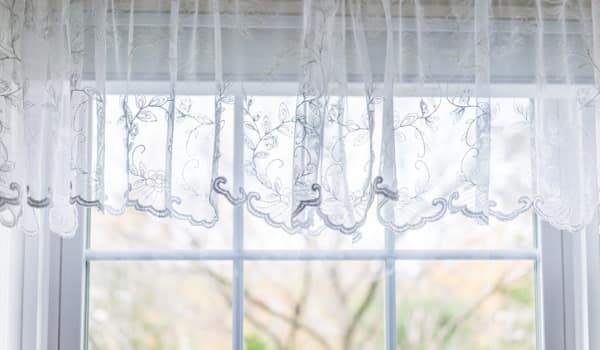
A sturdy and durable curtain rod is recommended for heavy curtains with valance. The best option is a heavy-duty, adjustable, and thick curtain rod made of strong materials such as steel or metal. Look for curtain rods with solid brackets and center support to handle the weight of the heavy drapes and valance without sagging or bending. Reinforced rods with a larger diameter provide better stability and can ensure that the window treatment stays securely in place, even with the additional weight of a valance.
Preparations

Measure the kitchen window
Begin by accurately measuring the width and height of the kitchen window. Take into account any obstructions like handles or latches that might affect the curtain placement. Precise measurements will help you determine the appropriate size of curtains and valance needed to cover the window effectively.
Select suitable curtains and valance
Carefully choose curtains and a valance that not only match your kitchen decor but also fulfill your functional requirements. Consider factors such as the style, color, and fabric of the Drapes and valance. If you’re opting for heavy or thick drapes, ensure they are compatible with the curtain rod and hanging method you plan to use.
Gather the necessary tools and materials
Before starting the installation, collect all the tools and materials required for the process. This typically includes the chosen curtain rod, brackets or hooks, screws or nails for installation, a measuring tape, a level, and any additional accessories like Drape rings or clips. Having everything ready beforehand will make the hanging process more convenient and efficient.
Choosing Curtain Hanging Methods

Standard curtain rod
A traditional and straightforward option, the standard curtain rod consists of a straight metal or wooden rod with fixed brackets. It is ideal for lightweight to medium-weight curtains and provides a simple and functional way to hang kitchen drapes with a valance.
Decorative curtain rod
A more aesthetically pleasing choice, a decorative curtain rod adds a touch of style and elegance to the window treatment. It comes in various designs, finishes, and final options, allowing you to match it with your kitchen decor. Decorative rods can handle lightweight to medium-weight curtains and can enhance the overall look of your kitchen space.
Tension rod
A versatile and drill-free option, the tension rod uses spring-loaded pressure to hold itself in place between window frames. This type of rod is suitable for lightweight curtains and is a convenient solution for temporary or rented spaces where you cannot install permanent fixtures. However, for heavy curtains with valance, a tension rod may not provide enough support and stability.
Curtain Hooks

S-shaped hooks
S-shaped hooks are simple and effective for hanging curtains with a rod pocket or grommets. They loop over the rod and easily attach to the drape’s top hem, providing a secure and neat hanging method for various Drape types, including those with valance.
Pinch-pleat hooks
These specialized hooks are designed for pinch-pleat curtains, which have evenly spaced pleats at the top. The hooks attach to the pleats, allowing the drapes to hang gracefully with a tailored and pleated appearance, making them a great choice for formal and elegant kitchen curtains with valance.
Sew-on tape
Sew-on tape, also known as header tape, is a strip of fabric with loops or pockets along the top edge of the curtain. It allows you to create various heading styles, including pleats or ruffles, by sewing them onto the Drape fabric. Sew-on tape is versatile and ideal for customizing the look of your curtains and valance.
Hook-and-loop tape
Also known as Velcro tape, hook-and-loop tape offers a quick and easy way to attach curtains and valance to a rod or pelmet. One side of the tape has tiny hooks, while the other side has Loops. The hooks and loops grip each other, securely holding the curtains and valance in place, making it a convenient option for lightweight drapes and Border installations.
Curtain Clips

Clip rings
Clip rings are small rings with attached clips that easily slide onto a curtain rod. They can be used with various curtain styles, including rod pockets, tab tops, or grommet drapes. The clips securely hold the Drape in place, making it easy to open and close them, and they also provide a modern and minimalist look to the window treatment with a valance.
Clamp-on clips
Clamp-on clips are another type of curtain clip that attaches directly to the top edge of the curtain fabric, eliminating the need for a rod pocket or other Drape heading. They have a clamp mechanism that grips the curtain tightly, allowing for a quick and simple installation without additional hardware. Clamp-on clips are suitable for lightweight Drapes and valances and offer a clean and contemporary appearance.
Curtain and Valance Style
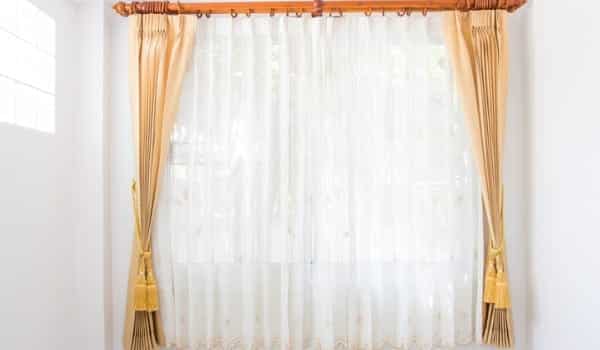
Full-length cafe curtains with valance
Classic and cozy combination, perfect for traditional and country-style decors. Cafe curtains offer privacy, while the valance adds an elegant touch to the window.
Sheer curtains with scalloped valance
Ethereal and delicate, lets soft light in while providing a sense of privacy. The scalloped valance adds sophistication, ideal for contemporary or shabby chic interiors.
Hanging Process

Install the curtain rod or track
Begin by mounting the curtain rod or track above the window frame at the desired height. Make sure it is securely fixed to the wall or window frame to support the weight of the curtains and valance.
Attach curtain hooks or clips to the curtains
If you are using curtain hooks, and insert them into the top hem of the curtains at regular intervals. For Drape clips, simply attach them to the top edge of the drapes, ensuring they are evenly spaced.
Hang curtains first, followed by the valance
Start by hanging the curtains onto the rod or track. Make sure they Are evenly distributed across the length Of the rod. Once the shades are in place, proceed to hang the valance on a separate rod or directly onto the same rod above the drapes.
Adjust the length and gather the fabric for the desired look
After hanging the curtains and valance, adjust their length if needed by hemming or tying them up. If you prefer a gathered look for the curtains, spread the fabric evenly along the rod or track.
Ensure even spacing and alignment
Double-check that the curtains and valance are evenly spaced and aligned. Stand back to assess their appearance and make any necessary adjustments to achieve a balanced and aesthetically pleasing result.
Additional Tips and Ideas

Layered curtains with valance
Create a luxurious and dynamic look by layering curtains with a valance. Choose a sheer curtain as the inner layer to let in light while maintaining privacy. Then, add a heavier Drape or drapery as the outer layer for a more substantial and opulent appearance. Complete the ensemble with a Border to add an elegant finishing touch, elevating the overall style of your windows.
Mixing patterns and textures
Don’t be afraid to experiment with mixing different patterns and textures in your curtains and valances. Combining subtle patterns with bold ones or contrasting textures can add depth and visual interest to your window treatments. Just ensure that the colors complement each other And that there’s a cohesive theme throughout the room.
Using tiebacks for a decorative touch
Incorporate tiebacks to hold the curtains in place while adding a decorative flair. Tiebacks Can be simple and elegant, Made from matching or contrasting fabric, or they can be creatively crafted from ribbons, ropes, or tassels. When not in use, tiebacks can add decorative detail to the sides of your curtains.
Consider window treatments for different kitchen styles
The kitchen is a unique space that requires both functionality and style. For a farmhouse or rustic kitchen, consider cafe drapes with a valance or a simple rod pocket valance to maintain a cozy and welcoming atmosphere. In a modern kitchen, opt for sleek and minimalistic shades with geometric patterns or clean lines. For a country-style kitchen, use floral or gingham patterned drapes with a scalloped Border to evoke a quaint and charming feel.
Final Touches
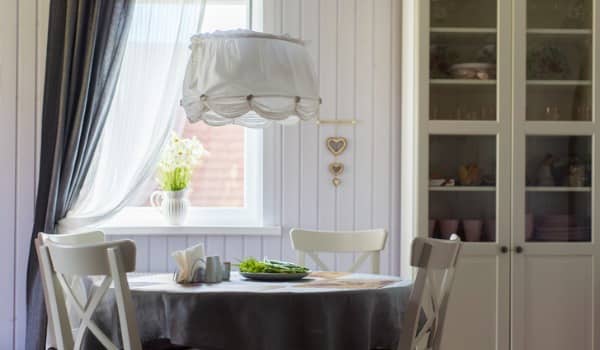
Iron or steam the curtains and valance
Before stepping back to admire your window treatment, take a moment to ensure that the curtains and valance are free from wrinkles and creases. Use a steamer or iron to smooth out any fabric imperfections, as this will contribute to a polished and well-put-together appearance.
Check for any adjustments or corrections
Examine the curtains and valance closely to spot any unevenness or areas that may need adjustments. Ensure that the drapes are hanging straight and evenly on the rod or track and that the valance is level and not askew. Make any necessary corrections to achieve a balanced and cohesive look.
Step back and admire the finished look
Finally, step back from the window to fully appreciate your handiwork. Admire how the curtains and valance enhance the overall decor of the room and how they beautifully frame the window. Take pride in creating A cozy and stylish space that exudes warmth and charm.
Importance of kitchen curtains and valance
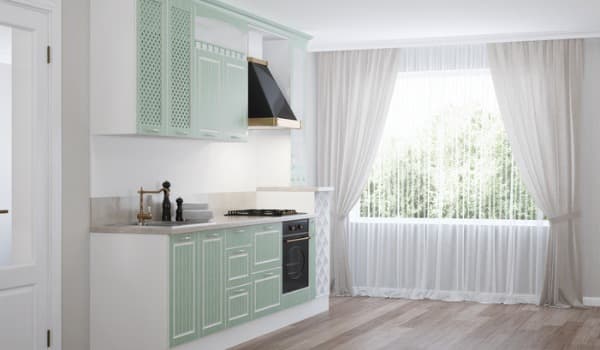
Kitchen curtains and valance play a crucial role in enhancing both the aesthetics and functionality of the kitchen. They provide privacy while filtering natural light, preventing harsh glares, and maintaining a pleasant ambiance. Additionally, these window treatments add a decorative touch, complementing the kitchen’s style and tying together the overall decor. By offering a cozy and inviting atmosphere, kitchen drapes and valance contribute to a comfortable space where family and guests can gather, making the kitchen not only functional but also visually appealing and enjoyable.
How can tiebacks be used to enhance the overall look?
Tiebacks can significantly enhance the overall look of curtains by adding a touch of elegance and functionality. By pulling the drapes away from the window and attractively securing them, tiebacks create graceful draping and allow more natural light to enter the room. They also add depth and texture to the window treatment, complementing the Drape fabric and overall decor. Whether using simple and understated tiebacks for a minimalist look or ornate and decorative ones for a more lavish feel, these small details can transform ordinary drapes into stylish and sophisticated focal points, elevating the aesthetics of any space.
What kind of hooks or clips can be used to hang the curtains?
Various types of hooks or clips can be used to hang curtains, depending on the curtain style and the type of curtain rod or track being used. For traditional Drape rods, S-shaped hooks are commonly used, as they can easily loop through the drapes rod pocket or tabs. Curtain rings with clips are versatile and work well with both rod pocket shades and grommets. For Drape tracks, gliders or sliders are typically used, which smoothly move along the track. Additionally, there are magnetic Drape tiebacks that can hold the drapes in place without the need for hooks or clips. The choice of hooks or clips depends on the desired Drape look and the compatibility with the curtain rod or track system.
Why is it important to iron or steam the curtains and valance before hanging?
It is essential to iron or steam the curtains and valance before hanging them to achieve a polished and visually appealing appearance. Wrinkles and creases Can detract from the overall look of the window treatment, Making it appear untidy and unfinished. By ironing or steaming the fabric, you ensure a smooth and crisp drape, allowing the drapes and valance to hang beautifully and create an inviting and well-put-together ambiance in the room.
Conclusion
Hanging kitchen curtains with a valance is a simple and effective way to enhance the look of your kitchen while also providing privacy and shade. By following the steps outlined in this article, you can easily achieve a professional-looking installation. Remember to measure carefully, choose the right hardware. And consider the style and fabric of your curtains for a cohesive and polished look. So go ahead and give your kitchen windows a makeover by hanging curtains with a valance – you’ll be amazed at the difference it makes!


